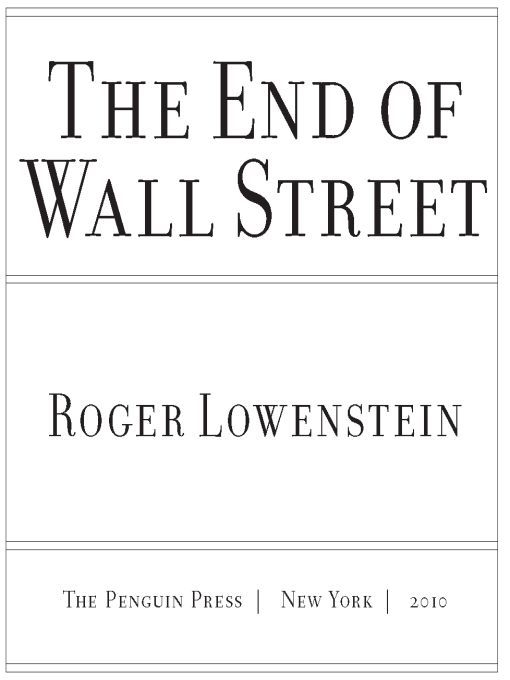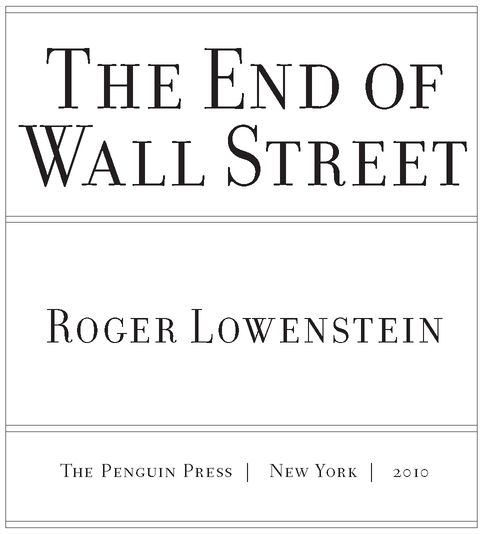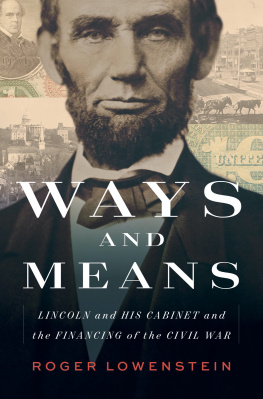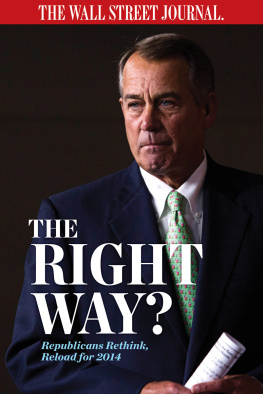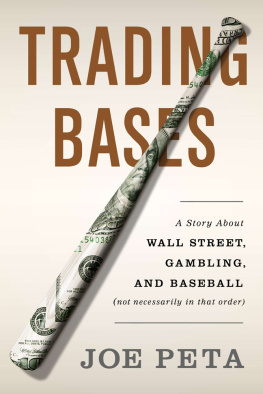Table of Contents
ALSO BY ROGER LOWENSTEIN
While America Aged: How Pension Debts Ruined General Motors,
Stopped the NYC Subways, Bankrupted San Diego, and
Loom as the Next Financial Crisis
Origins of the Crash: The Great Bubble and Its Undoing
When Genius Failed: The Rise and Fall of
Long-Term Capital Management
Buffett: The Making of an American Capitalist
To Judy, who saw me through this and more
CAST OF CHARACTERS
DAVID ANDRUKONIS, chief risk officer of Freddie Mac, warned that Alt-A loans were being abused
SHEILA C. BAIR, chairwoman of Federal Deposit Insurance Corporation, jousted with Paulson and Bernanke and pushed for help for homeowners
THOMAS C. BAXTER JR., New York Fed general counsel, directed Lehman to file for bankruptcy
RICHARD BEATTIE, storied chairman of Simpson Thacher & Bartlett, counseled Willumstad of AIG that bankruptcy was an option
BEN BERNANKE, succeeded Alan Greenspan as chairman of Federal Reserve on February 1, 2006; previously was a distinguished scholar who disputed that bubbles should be pricked; after the meltdown worked furiously to supply liquidity
DONALD BERNSTEIN, partner at Davis Polk & Wardwell, tackled the daunting task of separating bad Lehman assets from good
STEVEN BLACK, cohead of the investment bank of JPMorgan Chase and Jamie Dimons right-hand man
LLOYD C. BLANKFEIN, soft-spoken CEO of Goldman Sachs, was too close to Paulson for his rivals comfort
BROOKSLEY BORN, ran the Commodity Futures Trading Commission in the late 90s; her attempt to regulate derivatives was squelched by more powerful regulators
DOUGLAS BRAUNSTEIN, top JPMorgan investment banker, tried to piece together a rescue for AIG
WARREN E. BUFFETT, billionaire investor, frequently mentioned as potential savior of troubled investment banks
ERIN CALLAN, chief financial officer of Lehman
DAVID CARROLL, Wachovia senior executive, at a football game his BlackBerry fatefully buzzed
JOSEPH CASSANO, built AIGs financial-products unit into a powerhouse that was overexposed to credit default swap losses
JAMES E. (JIMMY) CAYNE, bridge-playing CEO of Bear Stearns, retired as the firms troubles were mounting
H. RODGIN COHEN, Zelig-like partner at Sullivan & Cromwell, involved in numerous high-stakes Wall Street negotiations
CHRISTOPHER COX, chairman of the Securities and Exchange Commission
JAMES (JIM) CRAMER, television stock jock, went into a rant over Bernankes slowness in cutting interest rates
GREGORY CURL, deal maker for Bank of America, tasked with negotiating with Merrill Lynch
ENRICO DALLAVECCHIA, chief risk officer of Fannie Mae, warned his superiors of portfolio risks
STEPHEN J. DANNHAUSER, chairman of the law firm Weil, Gotshal & Manges, feared a Lehman bankruptcy would be catastrophic
ALISTAIR DARLING, UK chancellor of the exchequer, insisted that Britain could not save Lehman
ROBERT EDWARD DIAMOND JR., CEO of Barclays Capital, urged the U.S. to guarantee Lehmans trades until the British bank could acquire it
JAMES L. (JAMIE) DIMON, CEO of JPMorgan Chase, coolly and methodically reduced his exposure to other banks to protect his own
ERIC R. DINALLO, New York State superintendent of insurance, approved a complex maneuver to get liquidity to AIG to keep its hopes alive
CHRISTOPHER J. DODD, chairman of the Senate Banking Committee, took a sweetheart loan from Angelo Mozilo as well as hefty campaign contributions from Fannie Mae and Freddie Mac
WILLIAM DUDLEY, chief of markets at the New York Federal Reserve (he was promoted to bank president in 2009)
JOHN C. DUGAN, Comptroller of the Currency, urged fellow regulators to toughen mortgage rules
LORI FIFE, Weil Gotshal partner, pulled all-nighters to save the carcass of Lehman
LAURENCE D. FINK, CEO of BlackRock, blunt-spoken Wall Street insider
GREGORY FLEMING, president of Merrill Lynch, frantically urged Thain to strike a merger with Bank of America
J. CHRISTOPHER FLOWERS, boutique private equity banker with a habit of surfacing at critical junctures on Wall Street
BARNEY FRANK, powerful Democratic congressman and ally of the mortgage twins Fannie and Freddie
RICHARD FULD, CEO of Lehman and the soul of the firm, by the fall of 2008 was Wall Streets longest-standing chief executive
JAMES G. (JAMIE) GAMBLE, Simpson Thacher partner representing AIG, asked the government to better its terms
TIMOTHY GEITHNER, president of the Federal Reserve Bank of New York, more open to bank bailouts than, initially, was Paulson; succeeded Paulson as Treasury secretary in 2009
MICHAEL GELBAND, Lehman banker who warned Fuld to lower the companys risk level; later he feared that bankruptcy would unleash the forces of evil
JOSEPH GREGORY, Lehman president, shielded Fuld but was slow to react to the firms growing risk
MAURICE R. (HANK) GREENBERG, longtime CEO of AIG, forced out by New York State attorney general Eliot Spitzer in 2005 as a result of an accounting scandal, when AIGs risk was escalating
ALAN GREENSPAN, chairman of Federal Reserve from 1987 through 2006, greatly eased monetary conditions and disputed that instruments such as derivatives needed government regulation
EDWARD D. HERLIHY, partner at the law firm Wachtell, Lipton, Rosen & Katz, close adviser to Paulson, Ken Lewis, John Mack, and others
JOHN HOGAN, risk officer at JPMorgan investment bank; after Lehman ignored his advice, he restricted Morgans trading with the firm
DAN JESTER, one of numerous Goldman bankers tapped by Paulson for the Treasury, became the governments point person on AIG
JAMES A. JOHNSON, Fannie Maes CEO during the 1990s, he refashioned the mortgage financier into a political juggernaut
COLM KELLEHER, Morgan Stanley chief financial officer, amid a panic urged investors to return to sanity
PETE KELLY, Merrill senior vice president, tried to dissuade ONeal, his boss, from buying a subprime issuer
ROBERT P. KELLY, CEO of Bank of New York Mellon
KERRY KILLINGER, CEO of Washington Mutual, he fancied that peddling risky mortgages was no different than selling retail
ROBERT KINDLER, Morgan Stanley banker, offered to accept capital written on a napkin
ALEX KIRK, former Lehman banker who returned after the management shakeup in June 08, tried to reduce the companys risk
DONALD KOHN, veteran Fed governor, informal tutor to Bernanke
RICHARD M. KOVACEVICH, CEO of Wells Fargo, chose Stanford and a career in banking over professional baseball

